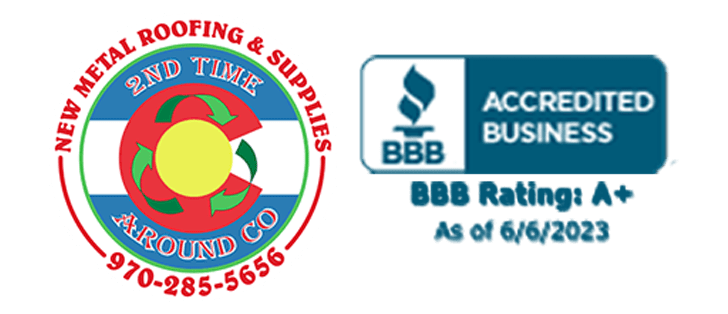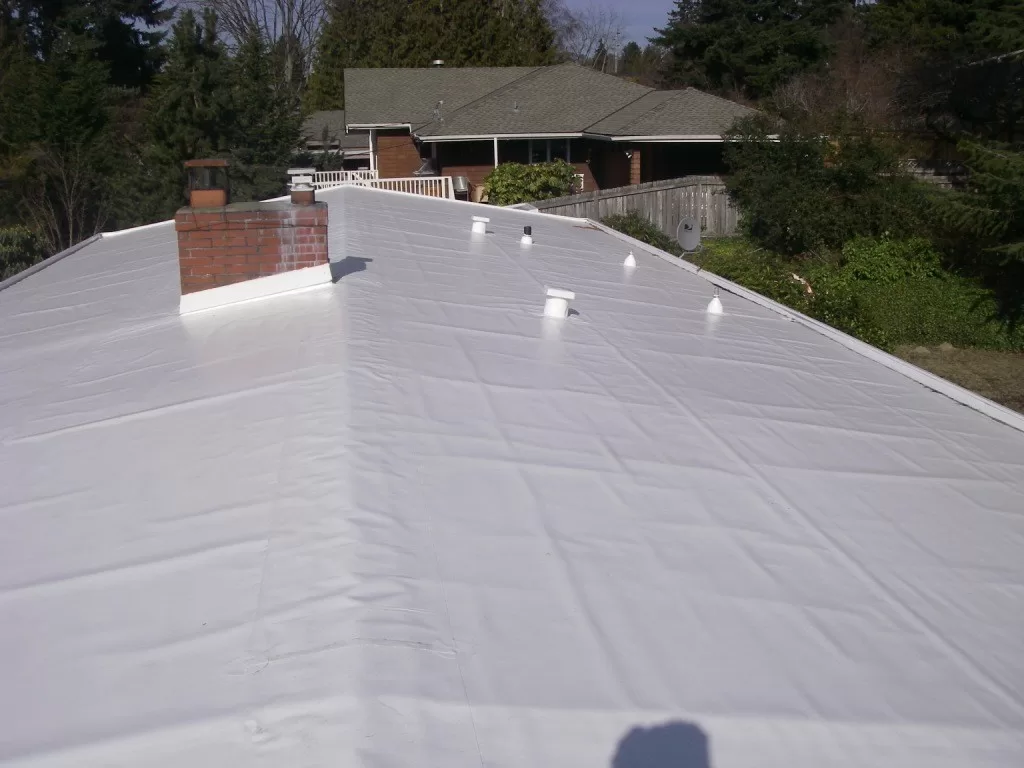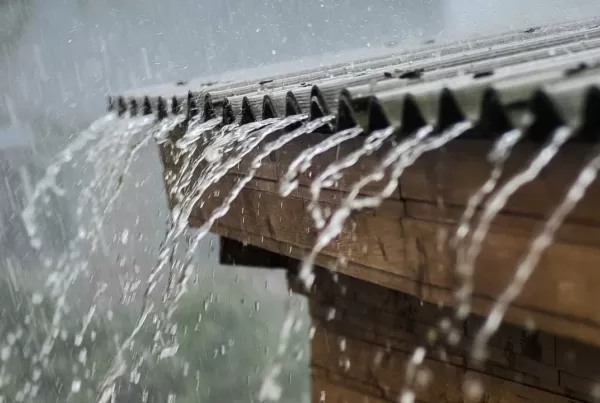PVC roofing membrane has long been a staple in commercial roofing projects due to its outstanding properties, but it’s also increasingly finding its way into residential roofing. However, many homeowners are unfamiliar with this roofing material and its benefits.
This comprehensive guide delves into the world of PVC roofing membranes, covering their characteristics, applications, lifespan, and cost. By the end of this article, you’ll better understand whether PVC roofing membrane is the right choice for your low slope or flat roof.
What is PVC Roofing Membrane?
PVC, which stands for polyvinyl chloride, is a single-ply white membrane used in both commercial and residential roofing applications. The membrane’s white color offers a unique advantage as it reflects heat rather than absorbing it, making it an excellent option for roofs over living spaces. Moreover, PVC roofing membrane is equally effective in non-living spaces such as garages or covered patios.
While PVC roofing membrane is a durable and efficient roofing material, homeowners should be aware that the white surface may accumulate dirt and grime over time. Considering this aspect during the decision-making process is essential to ensure satisfaction with the roofing material’s appearance.
3 Key Aspects of PVC Roofing Membrane
Let’s dive deeper into the three critical aspects that homeowners need to know about PVC roofing membranes.
1. Why Choose PVC Roofing Membrane?
The primary reason for opting for a PVC roofing membrane is its suitability for low slope or flat roofs. Roof pitches below 2:12 (less than 2 vertical units up for every 12 horizontal units out) are considered low slopes, and traditional roofing materials like asphalt shingles are not recommended for such roofs.
Low-slope or flat roofs present a challenge as water does not run off as quickly as it would on a higher-pitch roof. To ensure effective waterproofing and prevent water pooling, a waterproof roofing material like PVC roofing membrane is required. Notably, asphalt shingles, for instance, are not designed to handle sitting water, and even shingle manufacturers and building codes advise against installing them on roofs with a pitch below 2:12.
For this reason, PVC roofing membrane, or another flat roof system, is the ideal choice for low slope or flat roofs, providing reliable waterproofing and ensuring the integrity of the structure beneath.
2. Longevity of PVC Roofing Membrane
The lifespan of a roofing material is a crucial factor in evaluating its return on investment. A properly installed PVC roofing membrane can last approximately 25 years. While this 25-year lifespan is impressive, it’s essential to note that the actual longevity of any roof, including PVC membranes, depends on several factors.
External factors such as weather conditions, exposure to direct sunlight, and the quality of installation can all influence how long a PVC roof will ultimately last. Adequate maintenance and timely repairs also play a crucial role in extending the life of the roofing membrane. With proper care, a PVC roof can come close to its maximum life expectancy, providing homeowners with reliable protection for decades.
3. Cost Considerations
Understanding the costs associated with PVC roofing membranes is a significant concern for homeowners. On average, homeowners can expect to budget around $14.00 to $17.00 per square foot for smaller PVC roofing projects, while slightly larger projects may have a cost of around $12.00 per square foot.
Various factors impact the overall cost of a PVC roofing installation. The type of insulation used beneath the PVC membrane can affect expenses, with thicker insulation contributing to higher costs. Additionally, the size of the roof plays a crucial role in determining the price, with larger projects generally offering a lower cost per square foot.
Is PVC Roofing Membrane Right for You?
After learning about the key aspects of PVC roofing membrane, homeowners should have a better understanding of its suitability for their specific roofing needs. If you have a low slope or flat roof that requires a waterproof roofing material, PVC roofing membrane could be an excellent choice for you.
Take the first step towards a durable and reliable roof by contacting 2nd Time Around for a free consultation today. Invest in top-quality roofing materials and ensure the long-lasting protection of your property with 2nd Time Around!
Choose 2nd Time Around – Your Trusted Metal Roofing Supplier in Colorado.
Whether you opt for a PVC roofing membrane or consider the advantages of metal roofing, 2nd Time Around is your go-to metal roofing supplier in Colorado. With a wide range of metal roofing options, including durable and aesthetically pleasing choices, we have the perfect solution for your roofing needs.
Our experienced team is here to provide expert advice on choosing the best roofing material for your specific project.
Why Metal Roofing Reigns Supreme: The Advantages of Metal Roofs
Metal roofing has emerged as a superior roofing material, offering a myriad of advantages that make it a popular choice for homeowners. While PVC roofing membrane is an excellent option for low-slope or flat roofs, metal roofs reign supreme for a multitude of reasons. Let’s explore the key advantages of metal roofs and why they are the preferred roofing solution for many homeowners.
1. Durability and Longevity:
Metal roofs are renowned for their exceptional durability and longevity. Unlike other roofing materials that may require frequent repairs or replacements, a properly installed metal roof can last for 50 years or more, and in some cases, even a lifetime. Metal roofs are built to withstand the harshest weather elements, including strong winds, hail, heavy snow, and even fire. This unparalleled durability ensures that homeowners can enjoy a reliable and protective roofing solution for decades without worrying about costly repairs or replacements.
2. Energy Efficiency:
In an era where energy conservation is paramount, metal roofs offer a significant advantage in terms of energy efficiency. Metal has high reflectivity, which means it can reflect a significant portion of the sun’s heat away from the building. This property helps to keep the interior of the home cooler during hot weather, reducing the reliance on air conditioning and ultimately lowering cooling costs. As a result, homeowners can enjoy greater energy efficiency and reduced utility bills, making metal roofs an environmentally conscious choice.
3. Aesthetics:
Beyond the functional benefits, metal roofs also offer a wide array of aesthetic options, making them an attractive choice for homeowners. Metal roofing comes in various styles, profiles, and colors, allowing homeowners to choose a look that perfectly complements their home’s architecture and enhances its curb appeal. Whether seeking a traditional or contemporary appearance, metal roofs can be customized to suit individual preferences, making them a versatile and visually appealing roofing solution.
4. Low Maintenance:
Maintaining a roof can be a time-consuming and costly task, but metal roofs require minimal maintenance compared to many other roofing materials. Metal’s natural resistance to issues like rot, insects, and mold ensures that homeowners can enjoy a low-maintenance roofing solution. Routine inspections and occasional cleaning are generally sufficient to keep metal roofs in excellent condition, saving homeowners valuable time and money in the long run.
5. Eco-Friendly:
In an era of increased environmental awareness, metal roofs offer an eco-friendly roofing option. Many metal roofs are made from recycled materials, reducing the demand for new raw materials and promoting sustainable practices. Additionally, at the end of their long lifespan, metal roofs are fully recyclable, making them an environmentally responsible choice for homeowners who prioritize sustainability.
Metal roofing’s numerous advantages have made it a top choice for homeowners seeking a roofing material that combines durability, energy efficiency, aesthetics, low maintenance, and eco-friendliness. Whether it’s the enduring protection against the elements or the potential for cost savings on energy bills, metal roofs offer a compelling package of benefits.




